It’s no secret what SolSeraph is: even the capitalization of the title is a thinly-veiled reference to the Super Nintendo classic ActRaiser. The gameplay and plot featured here will be familiar to anyone who has played that 1990 game, as well.
SolSeraph is a hybrid platformer-town building game, although it swaps out the original’s real-time strategy elements for tower defense.
Unfortunately, neither element of SolSeraph feels like it’s fully realized, making for a game that is much better in idea than execution. There’s nothing really bad about it, but there’s not much good either. SolSeraph just kind of… is.
Pray to the Gods
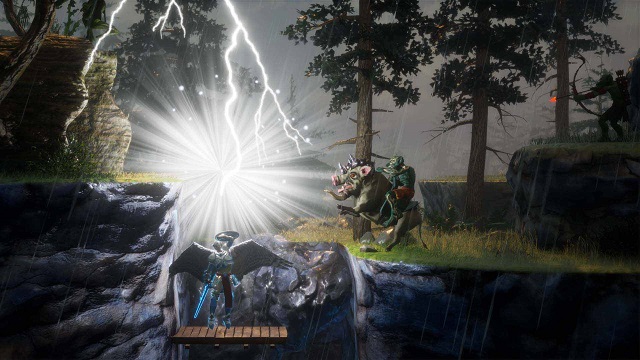
SolSeraph puts you in the role of Helios, a divine being who protects mankind from all sorts of nasty creatures. You do this by helping different tribes of humans in battles against other divine beings, who continually send monsters out to cause harm.
After selecting an area from the overworld map, you enter a platforming stage. Helios is a fairly straightforward character who starts the game with a fairly standard repertoire of moves at his disposal: a basic sword combo, a ranged attack, a double jump, a guard, and a back dash.
Sidescrolling stages have a few different objectives: sometimes you must reach the end of the stage, sometimes you have to defeat a large creature, and sometimes you’re in a small arena and must defeat waves of respawning enemies.
After finishing the sidescrolling stage, you are brought to another overworld map, smaller than the first. You must protect the tribe and flush out the boss of the region. Enemies will march out of the darkness, looking to extinguish the tribe’s campfire, always walking down a clearly delineated path.
You must manage your resources and construct the tribe’s buildings, placing defenses along the way to stop the ever-increasing waves. Eventually, you will find new lairs in the darkness, which you will enter and defeat until you have safeguarded the tribe and defeated the boss of the region.
Upon return to the main overworld map, you’ll have a new ability and several new areas to choose from.
Raising Acts
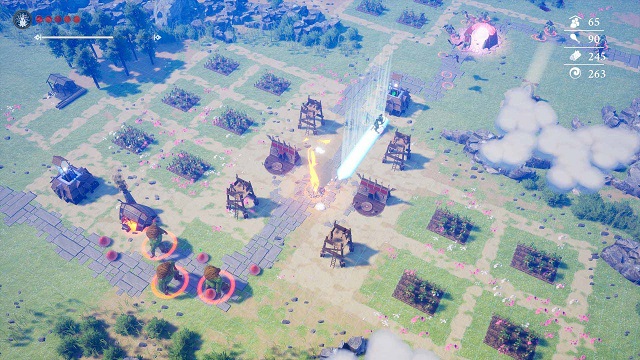
If you ever played ActRaiser, this set up will sound extremely familiar: it’s the exact progression that the SNES classic used.
Unfortunately, not everything in SolSeraph runs quite as smoothly as its spiritual predecessor. Everything feels kind of slow. In the sidescrolling stages, Helios runs slowly. He attacks slowly. He back dashes slowly. God forbid there’s an extended section where he’s underwater, which slows him down even more.
When you zoom out to the tower defense portions, enemies move slowly. They chug along towards you as you wait to kill enough of them so you can move on to the next area. You can zap them with lightning bolts, which hustles it along, but those lack the impact that your godlike powers should feel like they have.
This sluggishness in both sections causes two different problems.
In the sidescrolling sections of the game, it makes your character feel unresponsive. Coupled with a knockback effect when you are hit and some floaty jumping, it leads to some seriously frustrating “instant death” jumping sections that are completely infuriating.
In the tower defense sections, there is a lack of urgency. I never found myself panicking, and the only reason I ever had to restart one of these sections was because I simply lost track of where enemies were coming from as I waited to open the next sidescrolling lair.
Fury of the Gods
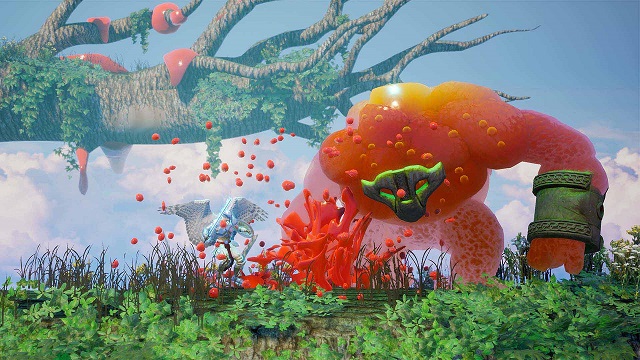
Of the two portions, the tower defense sections are more enjoyable. There is a wide variety of enemies and buildings for you to place, keeping you on your toes when you encounter something new. The lack of urgency does give you a chance to experiment a bit with different buildings and find the strategy you like. With a few tweaks, it could be a solid bit of puzzlework.
The sidescrolling sections are filled to the brim with odd design choices, however. Though they are 2D areas, enemies frequently enter the screen from the foreground or the background. I took far too many hits as I started swinging before they were on the same plane as me; it’s impossible to tell when they can be hit, and they move so deliberately that it looked to be much sooner than it was.
Enemies spawn in the path of your jumps, knocking you off cliffs to your doom. You often have to jump blindly, and the screen is so zoomed in that Helios will suffer a lot of cheap hits from fireballs appearing where you can’t see them. Your health bar becomes absolutely massive by the late game, making each hit feel insignificant as you tank through enemies rather than figure out effective strategies to avoid hits.
When you think of classic platformers, you usually think of pinpoint controls helping you overcome enemies, powerful abilities that help you defeat overwhelming odds, and repetition serving as a learning tool, not an exercise in frustration.
SolSeraph fails to deliver on those ideas.
Divine Intervention

That said, SolSeraph looks and sounds pretty. There’s a fun soundtrack, and it is obvious which enemies are tough and which will go down in just a hit or two. It’s also kind of fun to see the same tiny enemies on the tower defense portion tower over your character when you hit the sidescrolling portions.
Even the look of the game has some strange design choices. Powerups barely register when you pick them up. Even defeating each region’s boss, which unlocks a new power for Helios, barely makes a mark. Remember when you’d defeat a boss in the Mega Man games, and it was a big deal? Flashing lights, a massive upgrade screen, and a demonstration of the badass new power you’ve obtained?
In SolSeraph, it will say something like “You unlocked a new power: Flame.” Then you will have to wait until you enter the next area, tap through some text boxes, and select the new power to even see how it works. For a game where you play as a literal god, you certainly never feel like it.
Sunset
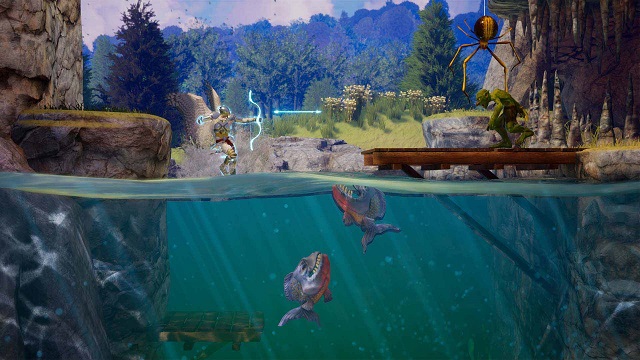
Pros:
- A callback to a classic
- Lots of strong ideas
- Good soundtrack and look
Cons:
- Slow and repetitive
- Never delivers on ideas
- Frustrating platforming
SolSeraph seems like a solid throwback to a much-beloved classic. On paper, it all looks right. Unfortunately, it never quite moves on the aspects it needs to. It ultimately winds up seeming more like a pale imitation than a hand-crafted tribute to ActRaiser.
SolSeraph never quite overcomes its sluggish, deliberate pacing and odd design choices to become what you’ll want it to become. With a few small tweaks, it could be a fantastic diversion and admirable tribute to the 16-bit days. As is, it feels like a tragic case of “almost got it.”
You’d be much better served grabbing a solid platformer and a solid tower defense game from the huge number available. SolSeraph just never quite soars as high as you’ll want it to.
[Note: A copy of SolSeraph was provided by Sega for the purpose of this review.]

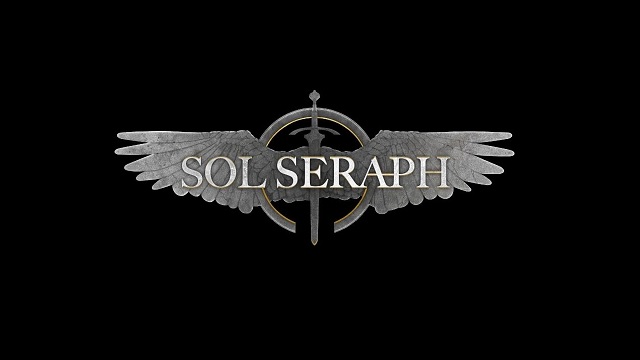








Published: Jul 8, 2019 02:00 pm